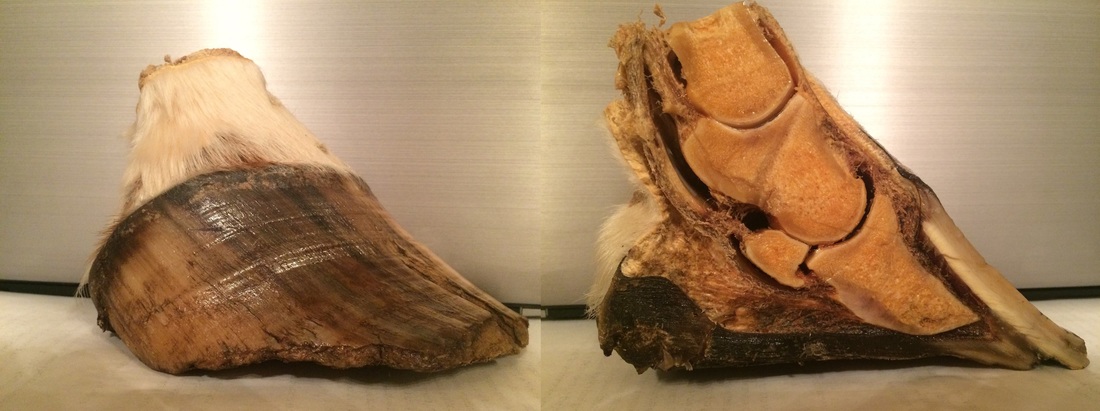What does Founder look like?
Jul 07, 2015
Published in Saddle Up Magazine August 2015
In last month’s article I discussed the difference between Laminitis and Founder. I explained that laminitis by definition is inflammation of the lamina in the hoof. The lamina affected are the sensitive lamina (surrounding the front and sides of the coffin bone) as well as the solar corium (the underside of the coffin bone). I also discussed that low grade laminitis left untreated, or during acute laminitis, the coffin bone can rotate within the hoof capsule becoming foundered. Founder is simply the rotation of the coffin bone. There is no almost or partly foundered. Either the bone is rotated or it is not. However, the severity of the rotation can vary. This is dependent of the overall health of the hoof prior to the laminitis, the length and severity of the laminitic episode as well as the current trimming/shoeing protocol. In this issue I want to show you what a foundered hoof looks like both inside and out.
In order to demonstrate a foundered hoof, I will first show you a healthy one. The hoof wall is well connected all the way from the coronary band to the ground, it is not flared, pulled forward, or separated.

In a foundered hoof the wall at the coronary band will start out at a healthy angle, even if it’s just for a 1/4 of an inch. As it descends it will abruptly change angle and flare forward. The lamina will be stretched or separated and the hoof wall will be flared. There are occasions where a wall can simply flare and not be foundered, in these cases the angle change is less abrupt and usually there will be more than one deviation.

While it is extremely important to seek veterinary attention in the event of a laminitic event, it is also important to have your veterinarian x-ray your foundered horse and work closely with your farrier/trimmer in order to determine the severity of the rotation and how to correctly trim the hoof to alleviate pain and allow a healthy hoof to grow in. Founder is very serious but often times can be repaired. You must first understand how and why your horse developed the laminitis that lead to the founder, and remove all future triggers. This usually means working closely with your veterinarian to determine blood glucose levels, hormone levels and ruling out other various disease that can facilitate laminitis. Second you must have a competent trimmer/farrier that understands the condition of the hoof and can trim to alleviate the rotation and grow in a healthy well connected hoof wall from the coronary band down. This rehabilitation process can take 6-12 months depending on the severity and how fast the individual horse’s hoof grows. Often the horse can return to light work well before rehab is complete, but it is dependent on the individual case and I would strongly recommend to consult your veterinarian and farrier/trimmer first.
